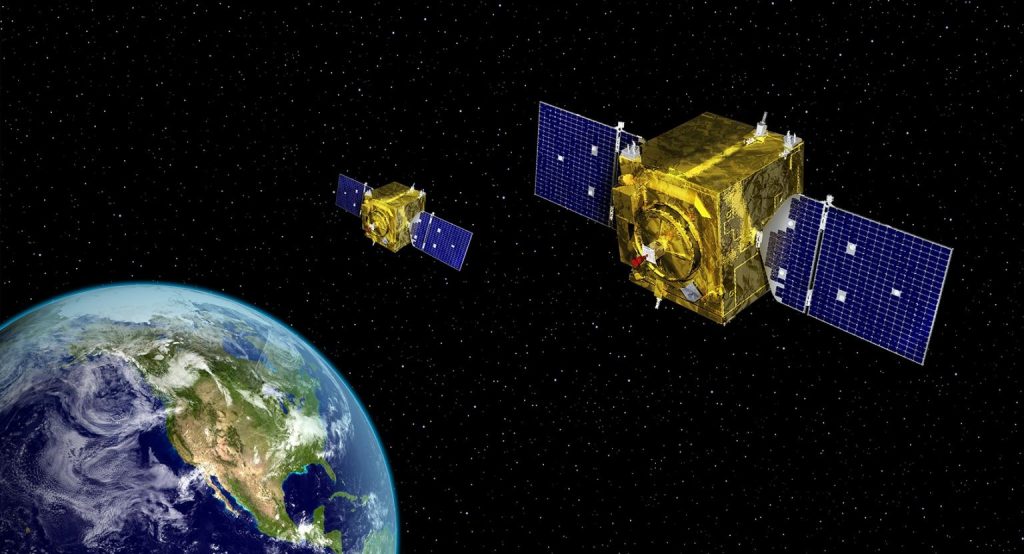China’s Use of Starlink Signals to Detect Stealth Aircraft
China’s breakthrough in utilizing Starlink satellite signals to detect stealth aircraft could fundamentally disrupt modern military tactics. The method leverages electromagnetic radiation from satellites, allowing the detection of previously undetectable stealth aircraft. This passive detection method could weaken the effectiveness of stealth technology, which is a key asset of many military forces worldwide.
Summary
- China has developed a new technique using Starlink satellite signals to detect stealth aircraft.
- The experiment took place in the South China Sea, where a DJI Phantom Pro drone was used to simulate a stealth fighter.
- Electromagnetic radiation from Starlink satellites illuminated the drone, scattering radio signals, which were then analyzed by Chinese researchers.
- This passive detection system does not rely on traditional radar, making it harder to counter than active detection systems.
- Stealth aircraft technology relies on specific shapes and coatings to evade radar, but this new method challenges those defenses.
- The detection system uses a specialized algorithm to detect even small details of the target, like propeller movement.
- The implications of this breakthrough could affect military operations, particularly the U.S. stealth aircraft fleet.
- Unlike radar, Starlink signals are harder to detect, allowing a more covert approach to aircraft detection.
- Stealth aircraft such as the American F-22 may become vulnerable to this new technology.
- The system has potential for global military impacts, as many nations rely heavily on stealth technology.
- The passive detection method prevents aircraft from knowing they are being tracked, giving China a significant advantage.
- If confirmed, this discovery could force the U.S. military and others to rethink their strategies.
- The technology also demonstrates the dual-use potential of commercial satellites like Starlink.
- As the system does not emit signals, it is undetectable, making it difficult for aircraft to deploy countermeasures.
- Military aviation strategies could shift dramatically if this technology is further developed and deployed globally.
Introduction
In a significant technological development, China has reportedly found a way to detect stealth aircraft by leveraging signals from Starlink satellites, a global network developed by SpaceX. This breakthrough challenges the very foundation of modern military aviation—stealth technology. The ability to detect stealth aircraft using satellite-based signals could give China a major strategic advantage, particularly in the Asia-Pacific region where tensions often run high.
The implications of this development extend beyond China’s borders, potentially impacting the way nations like the United States, which rely heavily on stealth technology, approach military operations in the future.
The Experiment: How China is Using Starlink
The experiment conducted by Chinese researchers took place in the South China Sea, an area already fraught with geopolitical tension. A DJI Phantom Pro drone was deployed to simulate a stealth aircraft. This drone was chosen due to its radar cross-section, which is said to be similar to that of an actual stealth fighter jet.
Instead of traditional radar-based systems, which actively emit signals to detect objects, China’s researchers relied on passive detection, utilizing the continuous stream of radio waves from a Starlink satellite orbiting over the Philippines. As the drone crossed through these signals, the radio waves scattered, and Chinese researchers detected these disturbances using a specially designed antenna.
Table 1: Starlink Signal Characteristics
| Feature | Description |
|---|---|
| Signal Frequency | High-frequency electromagnetic radiation |
| Range | Global coverage, with satellites orbiting low Earth orbit |
| Signal Type | Continuous stream of data transmission |
| Potential for Detection | Capable of illuminating stealth targets in the area of coverage |
The researchers then analyzed these disruptions, allowing them to pinpoint the location of the drone. This marked a major departure from traditional radar systems, as the method relied solely on electromagnetic radiation from satellites. The precision of this system was impressive; it could even detect fine details, such as the movement of the drone’s propellers. This breakthrough suggests that China’s military could develop the technology further, potentially rendering stealth aircraft more vulnerable.
Stealth Technology: The Current State of the Art
Stealth aircraft are designed to avoid detection through the use of radar-absorbing materials and specialized shapes that minimize radar reflections. These aircraft, such as the F-22 Raptor and the B-2 Spirit bomber, are critical to modern military operations, particularly those of the United States.
The U.S. military has invested billions of dollars into stealth technology over several decades, making it a core component of their air superiority. Stealth technology gives military aircraft the ability to fly undetected into enemy territory, carry out missions, and return without being detected by conventional radar systems.
The key to stealth aircraft’s evasion of radar is the active emission principle. Radar systems emit signals that bounce off objects and return to the radar station. Stealth aircraft avoid detection by absorbing or deflecting these signals away from the radar. However, China’s method with Starlink satellites employs passive detection, where no active signals are emitted. This makes stealth aircraft unable to detect when they are being tracked, removing one of their main advantages.
Unlike traditional radar detection, which can be countered by radar-seeking missiles or jamming technologies, the passive system using Starlink signals is undetectable to aircraft. This poses a significant threat, as aircraft cannot deploy countermeasures against a system they do not know is tracking them.
Military Implications: A Global Shift in Warfare?
If this technology is proven effective, it could have a profound impact on global military strategies. The U.S. military, which leads in the development and deployment of stealth aircraft, would face a serious challenge. Aircraft like the F-35 Lightning II and the B-21 Raider rely heavily on stealth to carry out their missions. With China now potentially able to detect these aircraft using a commercial satellite network, the U.S. and its allies may need to rethink their approach to stealth warfare.
Additionally, this technology highlights the dual-use potential of commercial space systems like Starlink. Initially designed to provide global broadband internet access, the satellites can now be used for military applications. This development raises concerns about the militarization of commercial space infrastructure and the role it will play in future conflicts.
Table 2: Key Differences Between Radar and Starlink-Based Detection
| Detection Method | Radar | Starlink-Based Detection |
|---|---|---|
| Signal Emission | Active (emits radar waves) | Passive (uses existing satellite signals) |
| Countermeasures | Can be jammed or targeted by radar-seeking missiles | Difficult to detect, preventing countermeasures |
| Target Visibility | Detects larger, reflective objects | Capable of detecting smaller objects like drones |
| Stealth Aircraft Evasion | Stealth coatings and shapes minimize detection | Stealth technology ineffective against passive detection |
The Future of Stealth Technology
The ability to detect stealth aircraft using Starlink signals is a new challenge for military engineers. Stealth technology is designed to make aircraft hard to detect by radar. Countries like the U.S. and others depend on this technology. Now, they might need to invest in new ways to protect their stealth aircraft. These could be new defenses or technologies to lessen the risk from China’s new detection methods. Some of these possible actions could include:
- Advancements in material science to further reduce an aircraft’s radar signature.
- Developing new counter-detection technologies that could mask an aircraft from satellite-based systems.
- Increasing investments in cybersecurity to protect satellite signals from being used for military applications.
It’s also possible that the development of low-orbit satellite constellations, like Starlink, will further accelerate the race to control the space domain for both commercial and military purposes. The international community may need to address the growing militarization of space through treaties or regulations to prevent the escalation of space-based conflicts.



